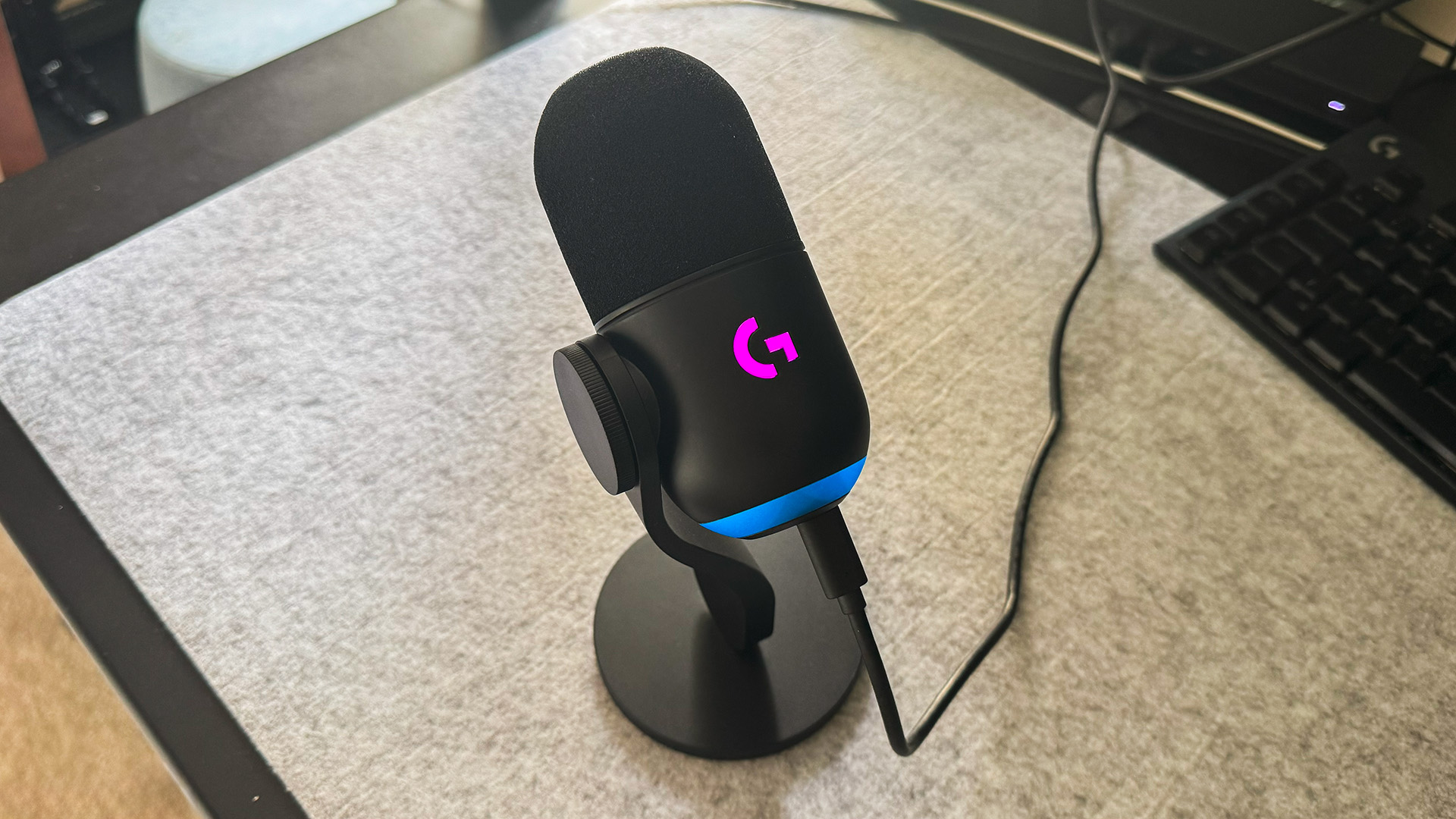GamesRadar+ Verdict
The Logitech Yeti GX updates the Blue Yeti Nano under the Logi brand. While it carries over the brilliant plug-and-play utility we know and love from previous Blue products, we're sad to say that streamers and content creators will find better value elsewhere. A headphone jack for live monitoring is such a basic feature of modern microphones and feels like a glaring omission here. The sound quality is certainly passable, but it requires its companion app to yield the best results.
Pros
- +
Simple plug-and-play USB
- +
Compact size
- +
Decent vocal performance
- +
Good noise rejection
Cons
- -
No headphone output
- -
Needs app for best results
- -
Lacks true depth and warmth
Why you can trust GamesRadar+
The Yeti name is a familiar one in the world of microphones but the word Logitech in front of it is a relatively new addition. The Logitech Yeti GX is one of the first gaming microphones to roll out after Logitech sunset the Blue brand and ushered in the start of a new era.
A $149/£139 dynamic microphone, the Logitech Yeti GX has plenty of competition in its quest to be one of the best microphones for streaming and gaming, but it should have plenty of knowledge to lean on too. Part of an ever-expanding streaming section in the Logitech G range, the Yeti GX arrives as a gaming-focused microphone with mass appeal.
With the top end of the market covered by the Blue Sona, is Logitech set to compete with the more accessibly priced Yeti GX?
Design & Features
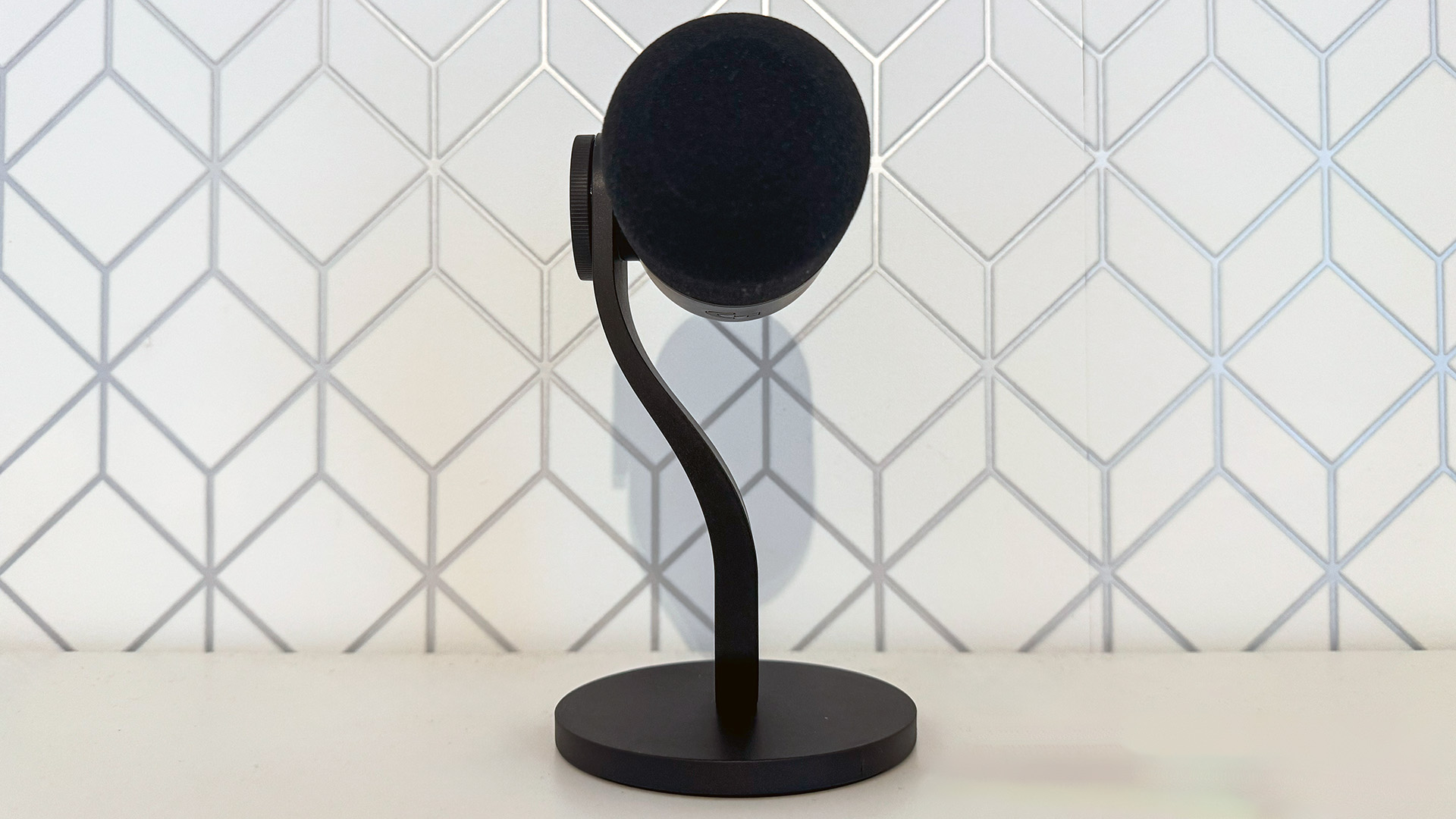
There’s a really clear design language developing across the Logitech G range and the Yeti GX looks right at home. It may carry the Yeti name Blue made famous but the GX is distinctly Logitech. This compact little microphone nicely blends the design of the Yeti Nano with Logitech's more modern feel, and the result is a final product that I rather like the look of.
Build quality is a tale of two halves on the Logitech Yeti GX as the microphone itself and the stand it comes with seem to fall into two pretty different categories. The Yeti GX body offers a premium feel that far outweighs its mid-range price point. The all-metal, matte black body is sleek and flawless, I’m very impressed. The backlit Logitech G logo is neatly incorporated and the addition of a customizable LED ring around the bottom adds a touch of flair. Even the scroll wheel feels top-end, which is good going as it’s hardly the most inspiring part of a microphone. You can tell Logitech has a successful history with mice because this wouldn’t feel out of place on a Logitech G Pro clicker.
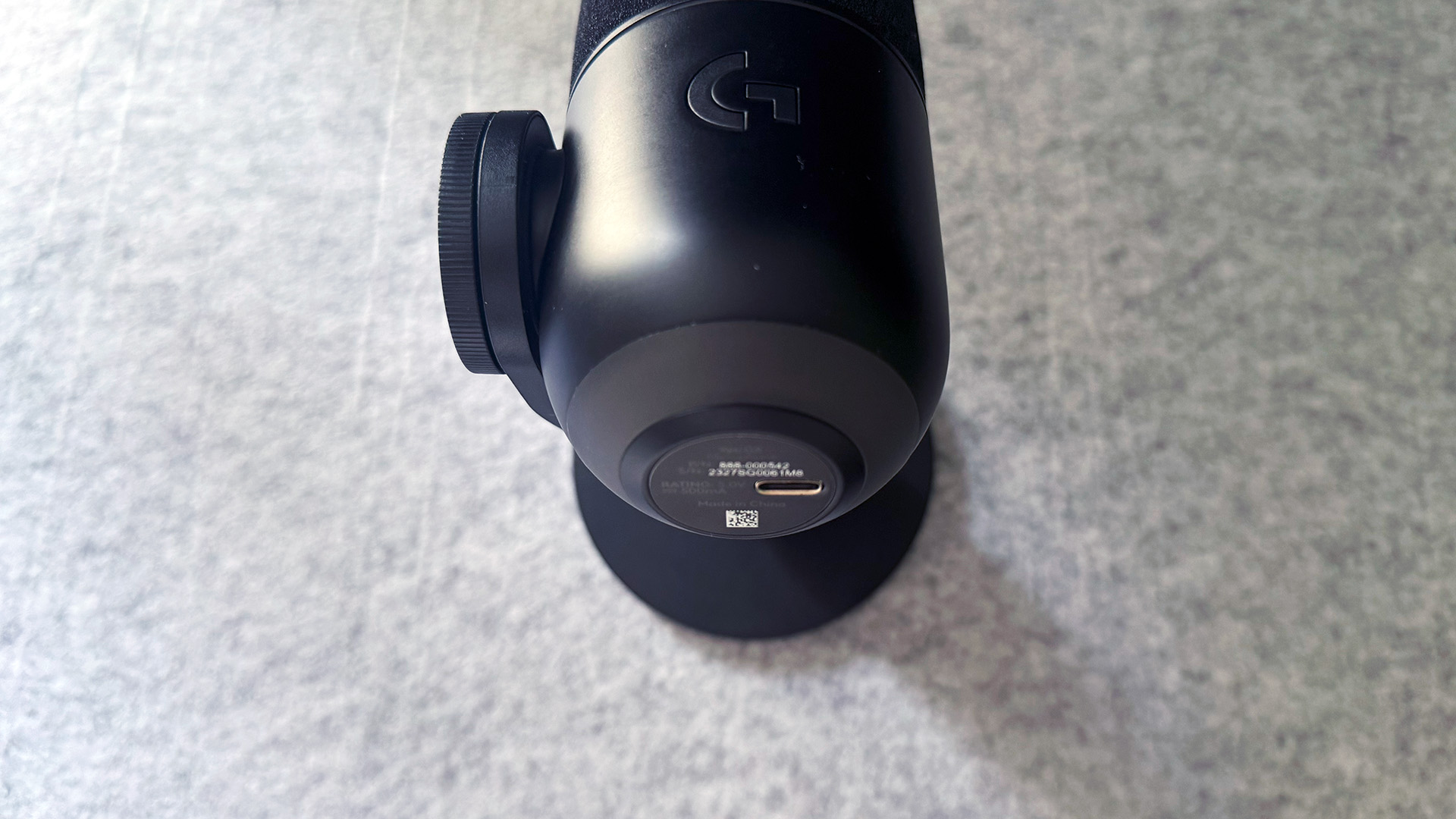
The Logitech Yeti GX stand, however, is not so good. Aesthetically it’s very elegant, the sweeping curves make it arguably the nicest-looking microphone stand I’ve tested, but build quality leaves a bit to be desired. Unlike the microphone body, the stand is all plastic and feels like an area where Logitech has pulled back on materials to keep costs down. The inner panel of the main arm doesn’t quite line up with a noticeably rough edge as a result and I’d have liked to have seen some sort of rubberized base rather than the thin layer of foam to help keep it stuck to my desk.
You don’t have to use the stand however, the Yeti GX can be mounted to mic arms both with and without that flowing arm which offers plenty of flexibility. Be aware though, on its own the Yeti GX is surprisingly light and I had trouble having it stay where I wanted using an Elgato Wave Arm unless I mounted it with the extra stand component. You’ll find an adapter in the box that should make the Yeti GX nearly universally compatible with arms and stands from different brands and a 2m USB-C to USB-A cable too.
Weekly digests, tales from the communities you love, and more
Performance
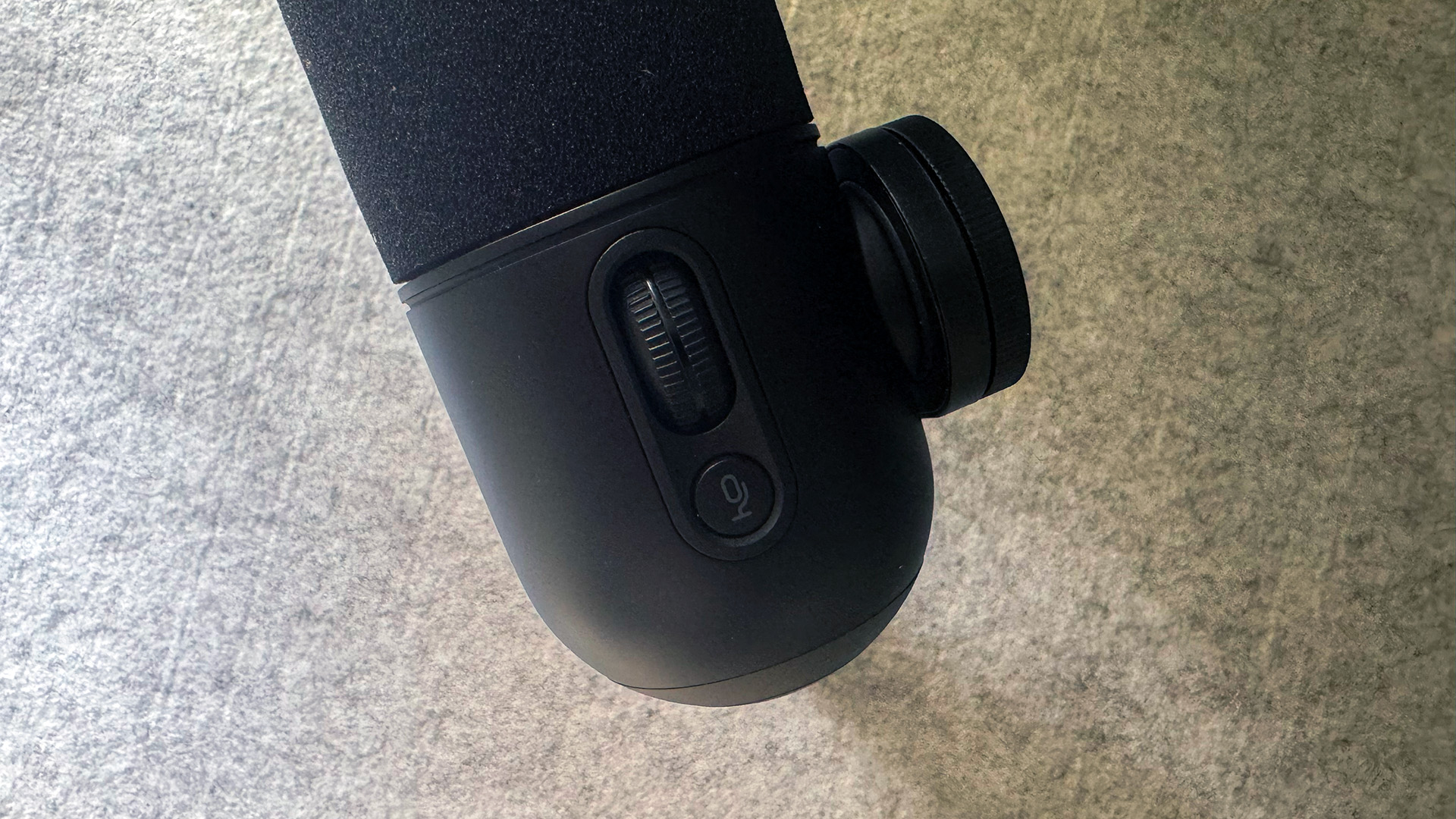
Since it's a simple plug-and-play USB microphone, it doesn’t take long to be up and running with the Logitech Yeti GX. Even without turning to the Logitech G Hub app, the Yeti GX quickly popped up in OBS and Discord and produced passable sound out of the box. In this way, it’s not an overly exciting microphone, particularly when put up against some of the best gear for streaming out there. It’s entirely fine with a pretty flat default profile that’s clear but lacks any real defining characteristic. Like a plain soft serve ice cream, it’s enjoyable enough and I won’t turn it down - but I’d like a flake or something else to go with it.
Thankfully G Hub has started to add some extra flavour with a range of tools that do make a noticeable difference. The Blue brand makes a triumphant return here in the form of Blue VO!CE which provides a range of customization options and presets to let you tailor, and in most cases improve your sound. Each of the 10 or so options provided quite a different result so it’s worth taking a few minutes to try all of them before settling on what works best for your voice. For me that tended to be the ‘Natural’ option which added some additional depth and polish to my voice without becoming clearly manipulated. With Blue VO!CE enabled the Logitech Yeti GX is a more enticing microphone for streamers, the clarity remained but with a more complete vocal package overall.
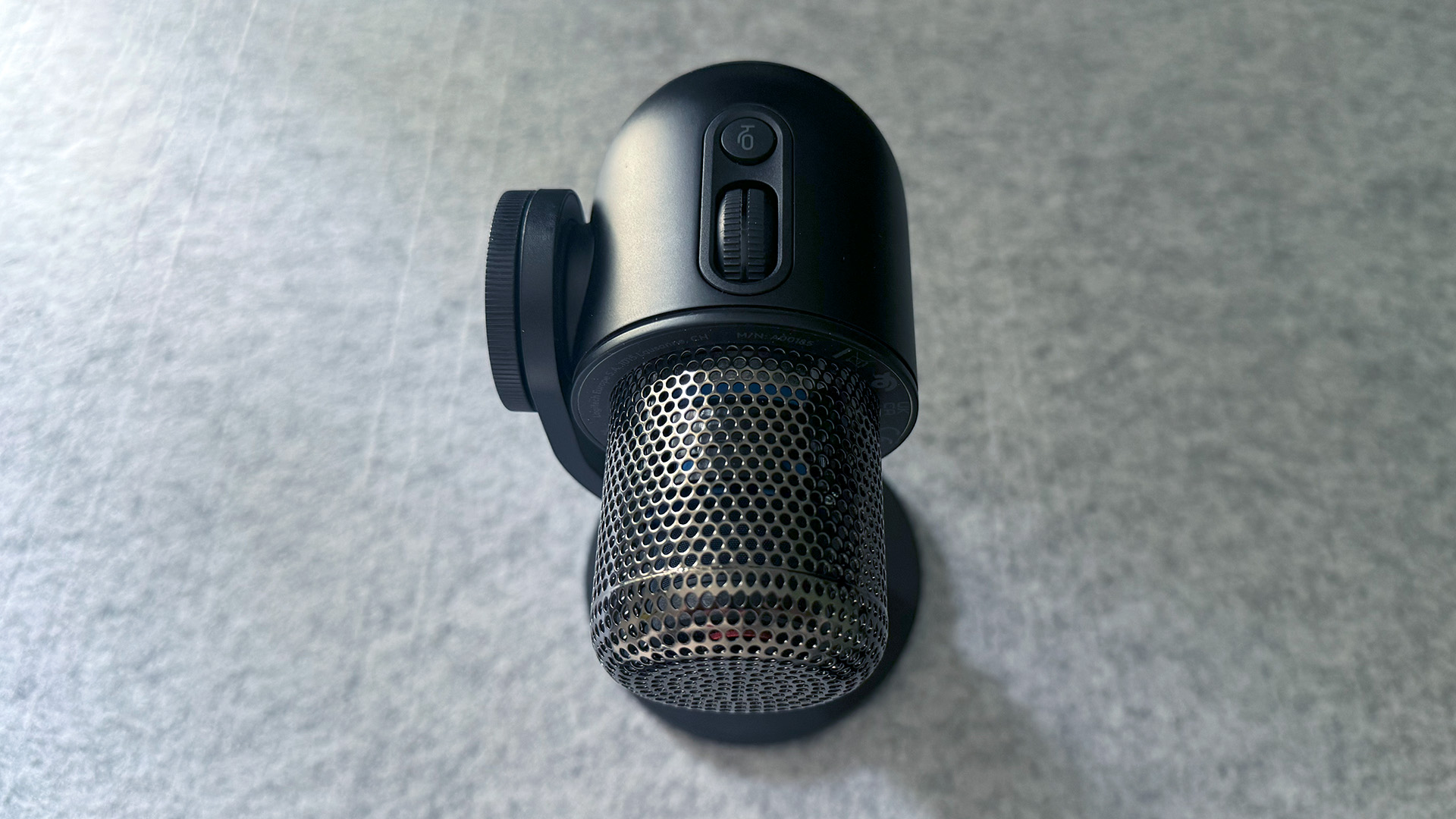
A dynamic microphone with a supercardioid pickup pattern, the Logitech Yeti GX demands you pay attention to it as it’ll do its best to ignore sounds that aren’t directly in front. In testing, I found this made it quite good at glossing over general unwanted room noise like mechanical keyboard clicks and fan noise but you’ll also need to position the microphone correctly in front of you or results quickly drop off. Be aware of desk bumps too as there’s no shock protection on offer and I found even minor knocks came thumping through into my broadcast.
Plosives were largely mitigated by the included foam windshield, at a normal distance of around 30cm away I noticed no ill effects and it wasn’t until I was right up close to the Yeti GX that these made it through. There’s also peaking protection thanks to the Smart Audio Lock which is triggered either through the app or by clicking the scroll wheel on the microphone itself. When it’s engaged it works well to balance audio levels on the fly and despite OBS thinking my audio was peaking and distorting, this wasn’t true on the output. Bizarrely, however, scrolling the wheel will disable Audio Lock and go back to manual control, making it easy to accidentally mess with your levels.
Given a click turns it on, a click is all that should be needed to turn it off? It’s just asking for trouble and makes things need too much care. There’s no 3.5mm headphone jack for real-time monitoring on the Logitech Yeti GX either, a glaring omission that only heightens the risk of accidentally messing up your settings and not realizing until it’s too late.
Should you buy the Logitech Yeti GX?
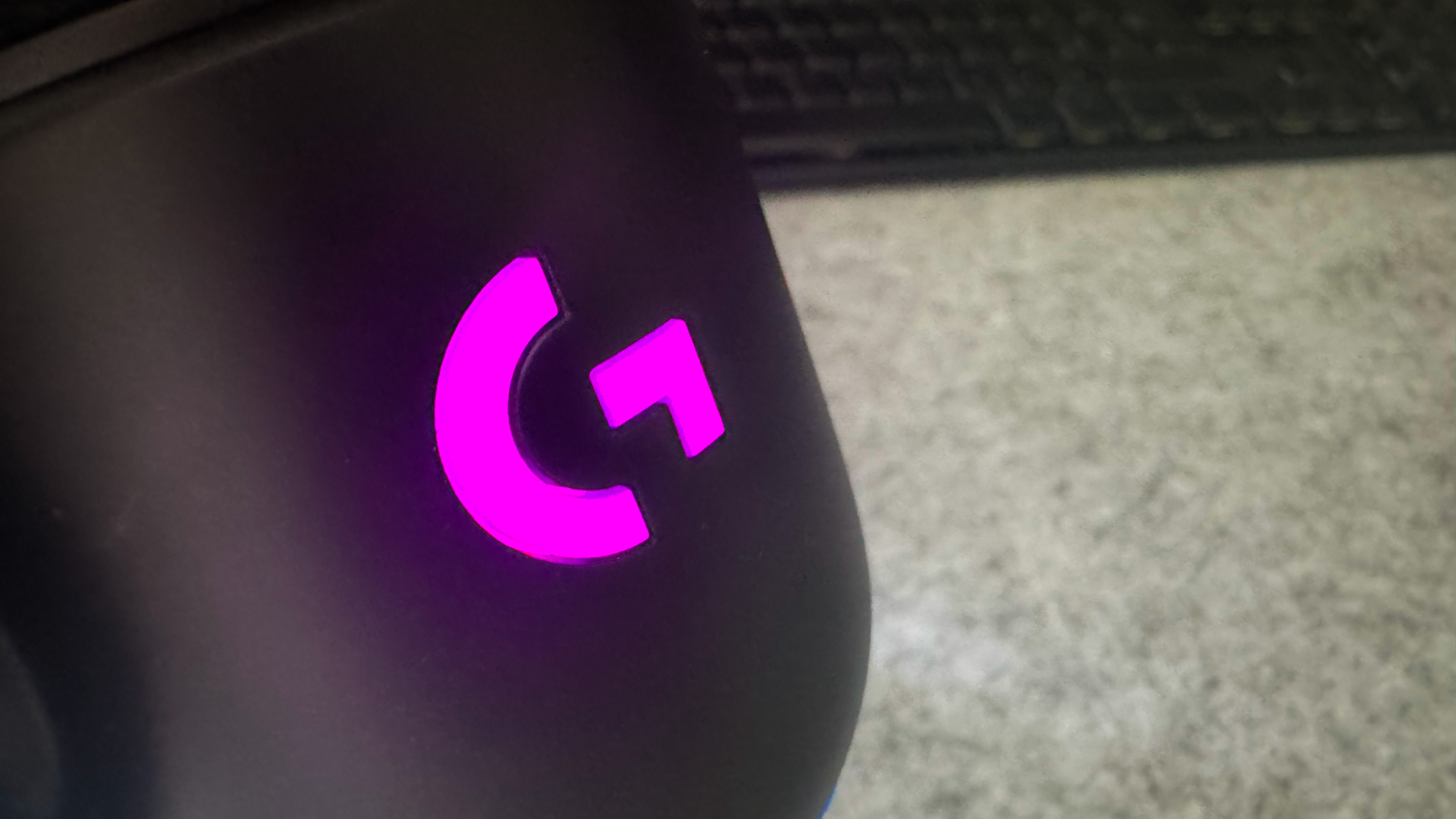
In a busy corner of the market, the Logitech Yeti GX comfortably holds its own without threatening to steal the show. This is a perfectly capable USB gaming microphone that offers clear vocals for Discord calls and game chat but doesn’t quite offer enough to become a go-to option for streamers.
A flat audio profile out of the box is greatly improved by the supporting software and $149/£139 isn’t outrageous for the performance on offer. Spending a little less on the Razer Seiren V3 Chroma will offer similar quality, albeit with a 3.5mm headphone jack for live monitoring. Alternatively, spending just a little more for something like the RODE PodMic USB will offer fuller results with less reliance on post-processing. Ultimately, creators looking to get serious about voice-focused content may see better value elsewhere.
How we tested the Logitech Yeti GX
I added the Logitech Yeti GX to my streaming and gaming setup for a week. I tested it through a range of real-world situations like Discord calls, video chats, and live streaming as well as dedicated audio sampling. I trialled it both on the included stand and attached to an Elgato Wave Arm both with and without the support of the Logitech G Hub app.
For more on how we test the latest gaming and streaming gear, check out our hardware policy.
Looking for more content creation tech? We've rounded up the best capture cards, the best webcams, and the best ring lights for streaming.

Alex is a streamer who has been creating gaming content for over a decade, streaming on Twitch regularly across the last five years. With a degree in film and a background in sports media, you'll find him jumping between 60,000 seat stadiums and his Animal Crossing island (where he's growing pears, in case you were wondering).
